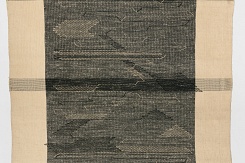From its inception, the Bauhaus was internationally oriented; students and teachers travelled from different parts of Europe and Asia to become part of the school. As curators of the bauhaus imiginista project understands the global circulation of Bauhaus ideas not in terms of impact, but rather through its participation in international networks prior to 1933 and how this was mirrored in the school’s afterlife. The rise of the right wing forced the Bauhaus to move from Weimar to Dessau in 1925 and to Berlin in 1932, before the National Socialists seized control and perpetrated their violence through the state apparatus. Consequently, as many international students and masters fled Germany to settle in different parts of the world. It is the transmission of knowledge that bauhaus imaginista follows: a transfer via migration of students and teachers, but also via the interpretation, appropriation, and imagination of diverse Bauhaus ideas, in China, North Korea, India, the Soviet Union, the United States, the United Kingdom, Japan and Brazil.
The multiyear research (2016–19), which bauhaus imaginista was able to gather in collaboration with international researchers and cultural producers from Brazil, China, India, Japan, Morocco, Nigeria, Russia, the United States, and the United Kingdom, shows to what extent and under which local conditions new design ideas and Bauhaus pedagogy were taken up and developed further. In this way, the project opens up a perspective on a transnational history of modernist art and design, marked by wars and dictatorships, non-aligned movements, the Cold War, and the processes of decolonization. bauhaus imaginista traces the history of a twentieth-century transcultural exchange from the perspective of international correspondence, relationships, encounters, and resonances. Putting this approach into practice in 2018, over the course of a year bauhaus imaginista has realized a series of transnational exhibitions and events with international partners: Le Cube—Independent Art Room, Rabat; the China Design Museum, Hangzhou; the Goethe-Institut and partners in New York, the National Museum of Modern Art, Kyoto; the Garage—Museum of Contemporary Art, Moscow; the SESC Pompéia, São Paulo; the University of Ife, Ile-Ife, and University of Lagos; and the Kiran Nadar Museum, New Delhi, as well as the Goethe-Institut in each location. Important elements of the results will be on show in Berlin and Bern in 2019.








 Kopie.jpg?w=245&h=163&c=1)









